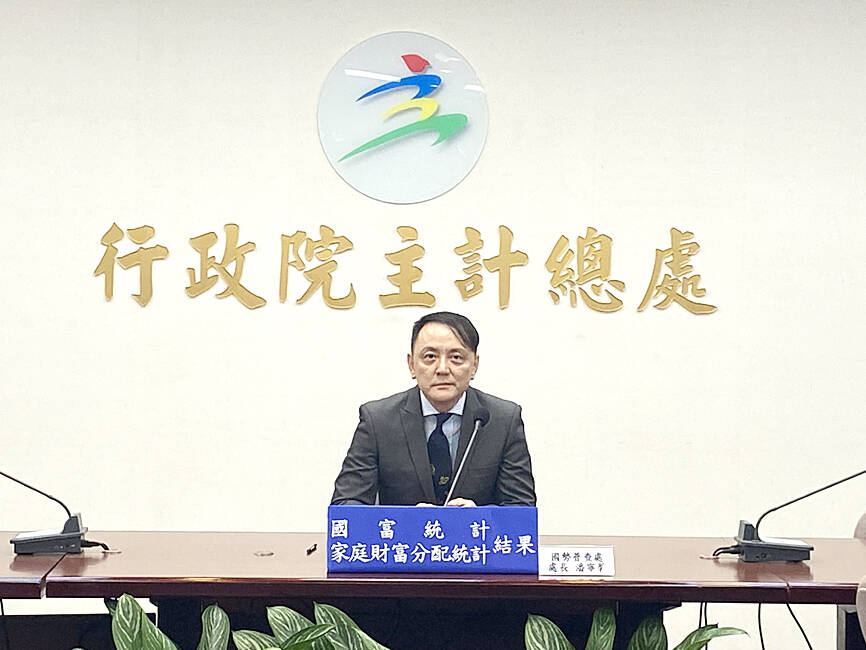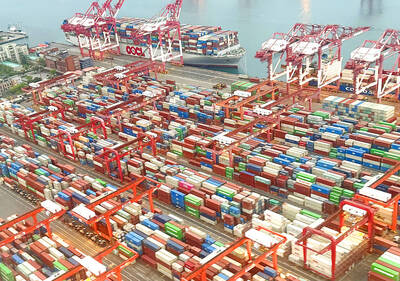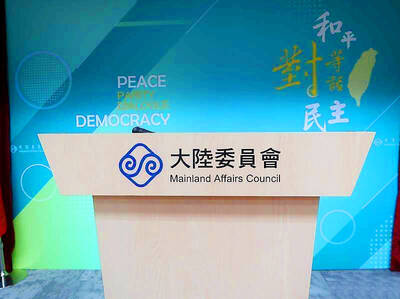Taiwan’s average wealth per household was NT$16.38 million (US$503,102) at the end of 2021, with about 71 percent of households coming in below the average, the Directorate-General of Budget, Accounting and Statistics (DGBAS) said yesterday.
Median wealth per household was NT$8.94 million, said the agency, which released the data for the first time in 30 years.
The Gini coefficient for Taiwanese households — a measure of inequality where zero indicates complete equality of wealth and one indicates complete inequality — was 0.606 at the end of 2021, lower than Australia’s 0.611, the UK’s 0.620, Japan’s 0.678, France’s 0.676 and Germany’s 0.727, the agency said in a report.

Photo: Clare Cheng, Taipei Times
The average wealth among the top 20 percent of Taiwanese households was NT$51.33 million in 2021, accounting for 62.68 percent of total household wealth, while the average for the bottom 20 percent was NT$770,000, or 0.94 percent of the total, the data showed.
As a result, the average household wealth for the top 20 percent was 66.9 times higher than for the bottom 20 percent, lower than Australia’s 93.1 times, the UK’s 109.5, South Korea’s 140.1 and France’s 627.4, meaning that household wealth distribution is relatively even in Taiwan, the DGBAS said.
The last time the DGBAS released a wealth distribution report was in 1992. The agency has not released a similar report since then because data was difficult to come by due to the need for personal information, it said.
Unlike the previous report, which was based on a survey of households the previous year, the latest report was compiled using surveys of family income and expenditure, along with other household data such as assets and liabilities, the agency said, urging caution when making comparisons as the two reports used different data collection and statistical methods.
In the previous report, the average household wealth was NT$5.26 million in 1991, with the top 20 percent’s wealth 16.8 times higher than that of the bottom 20 percent, while the Gini coefficient was 0.47 at that time, DGBAS data showed.
The widening gap in wealth disparity is inevitable in free economies, but Taiwan's wealth inequality is less severe than in many other countries, DGBAS Census Department Director Pan Ning-hsin (潘寧馨) said at a news conference yesterday.
The agency yesterday also reported that Taiwan’s gross national wealth was NT$310.61 trillion at the end of 2022, an increase of NT$26.18 trillion, or 9.2 percent, from the end of 2021, while net national wealth was NT$247.14 trillion, also an increase of NT$21.72 trillion, or 9.63 percent, from a year earlier.
National wealth statistics represent the current value of all goods owned by the people in a nation at the end of year, the agency said.
Gross national wealth is the total value of net assets on current prices owned by five sectors: households, non-profit institutions, non-financial enterprises, financial enterprises and government, and net national wealth represents the assets value of gross national wealth with depreciation being deducted, it said.
At the end of 2022, the net worth — assets minus liabilities — of the household sector was NT$159.08 trillion, accounting for 64.37 percent of the net worth of all sectors, the report showed.
Additional reporting by CNA

MORE VISITORS: The Tourism Administration said that it is seeing positive prospects in its efforts to expand the tourism market in North America and Europe Taiwan has been ranked as the cheapest place in the world to travel to this year, based on a list recommended by NerdWallet. The San Francisco-based personal finance company said that Taiwan topped the list of 16 nations it chose for budget travelers because US tourists do not need visas and travelers can easily have a good meal for less than US$10. A bus ride in Taipei costs just under US$0.50, while subway rides start at US$0.60, the firm said, adding that public transportation in Taiwan is easy to navigate. The firm also called Taiwan a “food lover’s paradise,” citing inexpensive breakfast stalls

TRADE: A mandatory declaration of origin for manufactured goods bound for the US is to take effect on May 7 to block China from exploiting Taiwan’s trade channels All products manufactured in Taiwan and exported to the US must include a signed declaration of origin starting on May 7, the Bureau of Foreign Trade announced yesterday. US President Donald Trump on April 2 imposed a 32 percent tariff on imports from Taiwan, but one week later announced a 90-day pause on its implementation. However, a universal 10 percent tariff was immediately applied to most imports from around the world. On April 12, the Trump administration further exempted computers, smartphones and semiconductors from the new tariffs. In response, President William Lai’s (賴清德) administration has introduced a series of countermeasures to support affected

CROSS-STRAIT: The vast majority of Taiwanese support maintaining the ‘status quo,’ while concern is rising about Beijing’s influence operations More than eight out of 10 Taiwanese reject Beijing’s “one country, two systems” framework for cross-strait relations, according to a survey released by the Mainland Affairs Council (MAC) on Thursday. The MAC’s latest quarterly survey found that 84.4 percent of respondents opposed Beijing’s “one country, two systems” formula for handling cross-strait relations — a figure consistent with past polling. Over the past three years, opposition to the framework has remained high, ranging from a low of 83.6 percent in April 2023 to a peak of 89.6 percent in April last year. In the most recent poll, 82.5 percent also rejected China’s

PLUGGING HOLES: The amendments would bring the legislation in line with systems found in other countries such as Japan and the US, Legislator Chen Kuan-ting said Democratic Progressive Party (DPP) Legislator Chen Kuan-ting (陳冠廷) has proposed amending national security legislation amid a spate of espionage cases. Potential gaps in security vetting procedures for personnel with access to sensitive information prompted him to propose the amendments, which would introduce changes to Article 14 of the Classified National Security Information Protection Act (國家機密保護法), Chen said yesterday. The proposal, which aims to enhance interagency vetting procedures and reduce the risk of classified information leaks, would establish a comprehensive security clearance system in Taiwan, he said. The amendment would require character and loyalty checks for civil servants and intelligence personnel prior to